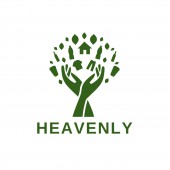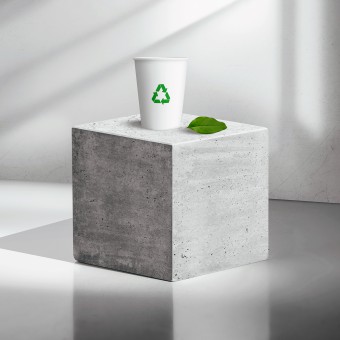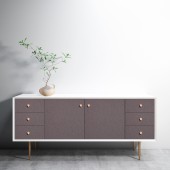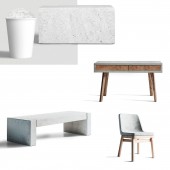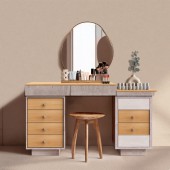DESIGN NAME:
Cupcrete
PRIMARY FUNCTION:
Papercups to Concrete
INSPIRATION:
This project, sparked by a TV program, addresses the environmental impact of paper cups. Despite being labeled recyclable, less than 1% of paper coffee cups are actually recycled due to the polyethylene coating inside. This is because of the complexities of separating plastic from paper during recycling, coupled with the high costs involved. Over 269 billion cups (weighing as much as one million elephants) end up in landfills yearly, taking over 20 years to decompose and releasing harmful pollutants.
UNIQUE PROPERTIES / PROJECT DESCRIPTION:
Cupcrete represents an environmentally friendly variant of concrete crafted from recycled paper cups and Portland cement. Through a novel process for recycling paper cup waste, we have generated a new material akin to cotton, to formulate a green concrete dubbed 'Cupcrete'. This methodology offers an ecological solution for mitigating the consumption of natural resources and reducing waste production. The versatility of Cupcrete allows for numerous potential variations.
OPERATION / FLOW / INTERACTION:
Cupcrete is like the magic of turning paper cup waste into concrete! Just mix it up with cement and water, pour it into molds, and watch it transform. It's incredibly lightweight yet strong, keeping buildings quiet and cool. From walls to floors, even furniture, Cupcrete does it all! What's truly awesome is its eco-friendly nature, saving precious resources with every use. It outshines regular concrete with its lighter weight, lower cost, and superior environmental benefits. It's not just concrete; it's a revolution in building with heart and conscience.
PROJECT DURATION AND LOCATION:
This project commenced in September 2022 in Milan and concluded in June 2023, also in Milan.
|
PRODUCTION / REALIZATION TECHNOLOGY:
After the upcycling process of paper cups, which are transformed into a cotton-like material, this substance can then be blended with other recycled or sustainable materials such as cement, sand, or recycled textile fibers to enhance its strength and durability. Essentially, the constituents, when mixed in different proportions, produce concrete with varying properties, making it a versatile material for buildings, furniture, and accessories.
SPECIFICATIONS / TECHNICAL PROPERTIES:
Cupcrete is formulated by combining cement, shredded paper cups, and sand (if required), which are then mixed with water to create a fluid mixture. This mixture is subsequently poured into blocks or panels and allowed to dry. Cupcrete offers lightweight construction and demonstrates outstanding acoustic and thermal insulation properties. It is distinguished by its cost-effectiveness, sustainability, and notable characteristics such as high ductility, energy absorption capacity, and low density.
TAGS:
global warming, papercups waste, sustanable, upcycle, recycle, concrete, new material, innovation, construction, green
RESEARCH ABSTRACT:
This abstract explores the transformation of paper cups into reusable options to address environmental issues.
Cupcrete is formulated by combining cement, shredded paper cups, and sand (if required), which are then mixed with water to create a fluid mixture. This mixture is subsequently poured into blocks or panels and allowed to dry.
With parental support, especially from our mother, a solution was found through thorough examination. Motivated by sustainability, the study delves into technical details such as cup materials and recycling challenges.
It emphasizes innovative approaches like upcycling to reduce paper cup waste and promote sustainability.
It's super light and keeps noise and heat out of buildings. You can use it for walls, floors, even furniture! It's awesome because it's eco-friendly and saves resources. It works better than regular concrete because it's lighter, cheaper, and better for the environment.
Currently, we are engaging an Italian engineering team to work on obtaining detailed properties of this concrete.
CHALLENGE:
The toughest aspect of the research was turning cups into a cotton-like material, mainly done at home. Another major challenge is properly collecting and sorting waste at the city level, requiring coordination with bureaucracy and adherence to local regulations. Collaborating with municipal authorities or relevant organizations is essential for program implementation. To address these challenges, we've developed smart bins for municipal presentation. This initiative aims to enhance city recycling and waste management efforts.
ADDED DATE:
2024-03-30 19:43:10
TEAM MEMBERS (2) :
Samira Kharazan and Sepideh Kharazan
IMAGE CREDITS:
Main Image #1: Samira Kharazan, 2024.
Image #1 : Samira Kharazan, 2024.
Image #2 : Samira Kharazan, 2024.
Image #3 : Samira Kharazan, 2024.
Image #4 : Samira Kharazan, 2024.
Image #5 : Samira Kharazan, 2024.
Video : Samira Kharazan, 2024.
|
